





Colorado Criminal Law of Stalking – A Closer Look at Understanding Stalking Law C.R.S. 18-3-602., C.R.S. 18-3-601. Formerly 18-9-111
Introduction – The following Colorado law defines the crime of stalking in Colorado. However – to defend against the higher charge of stalking (from the base misdemeanor charge of harassment)- one has to fully understand what enhancements are necessary to reach the Colorado felony crime of Stalking.
A Colorado Jury Is Instructed On The Elements Of Stalking In The Following Jury Instructions – Each Instruction contains a different theory of prosecution:
STALKING (CREDIBLE THREAT)
The elements of stalking are:
1. That the defendant,
2. in the State of Colorado, at or about the date and place charged,
3. knowingly
4. made a credible threat to _______________
(insert name of person)
5. directly, or indirectly through another person,
6. and in connection with such threat
7. repeatedly
8. followed, approached, contacted, placed under surveillance, or made any form of communication with
9. [_______________][a member of _______________ ‘s immediate family][someone with
(insert name of person) (insert name of person)
whom _______________ has or has had a continuing relationship]
(insert name of person)
[10. Without the affirmative defense in instruction number______________]
After considering all the evidence, if you decide the prosecution has proven each of the elements beyond a reasonable doubt, you should find the defendant guilty of stalking.
After considering all the evidence, if you decide the prosecution has not proven each of the elements beyond a reasonable doubt, you should find the defendant not guilty of stalking.
STALKING – (CAUSE SERIOUS EMOTIONAL DISTRESS)
The elements of stalking are:
1. That the defendant,
2. in the State of Colorado, at or about the date and place charged,
3. knowingly,
4. directly, or indirectly through another person,
5. repeatedly
6. followed, approached, contacted, placed under surveillance or made any form of communication with
7. [_______________] [a member of _______________ ‘s immediate family][someone with
(insert name of person) (insert name of person)
whom _______________ has or has had a continuing relationship]
(insert name of person)
8. in a manner that would cause a reasonable person to suffer serious emotional distress, and
9. does cause [_______________][a member of _______________ ‘s immediate
(insert name of person) (insert name of person)
family][someone with whom _______________ has or has had a continuing relationship]
(insert name of person)
10. to suffer serious emotional distress
[11. without the affirmative defense in instruction number______________]
After considering all the evidence, if you decide the prosecution has proven each of the elements beyond a reasonable doubt, you should find the defendant guilty of stalking.
After considering all the evidence, if you decide the prosecution ha snot proven each of the elements beyond a reasonable doubt, you should find the defendant not guilty of stalking.
Some Notes on the alleged victim’s state of mind and need for treatment.
See §18-9-111(4)(b)(III): “For purposes of this subparagraph (III), a victim need not show that he or she received professional treatment or counseling to show that he or she suffered serious emotional distress.”
The following definitions should be provided with this instruction “immediate family” and “repeated/repeatedly”.
INTERROGATORY – (HARASSMENT – STALKING)
If you find the defendant not guilty of Harassment – Stalking, then you should disregard this instruction. If, however, you find the defendant guilty of Harassment – Stalking then answer following question:
When the defendant committed Harassment – Stalking,
a. was there in effect a temporary or permanent restraining order, injunction, condition of bond, parole, or probation, or any other court order prohibiting
____________________________________________ , and
(Insert behavior prohibited by the court order listed in 18-9-111(4)(b)
b. did the defendant know the order described above was in effect?
After considering all the evidence, if you decide the prosecution has proven these elements beyond a reasonable doubt, you should indicate “Yes” on the verdict form that has been provided.
After considering all the evidence, if you decide the prosecution has failed to prove these elements beyond a reasonable doubt, you should indicate “No” on the verdict form that has been provided.
Your finding must be unanimous.
Understanding The Nature Of Felony Stalking
The current stalking law helps us to understand the mind of the Colorado State legislature in enacting the stalking law.
“A stalker will often maintain strong, unshakable, and irrational emotional feelings for his or her victim, and may likewise believe that the victim either returns these feelings of affection or will do so if the stalker is persistent enough. Further, the stalker often maintains this belief, despite a trivial or nonexistent basis for it and despite rejection, lack of reciprocation, efforts to restrict or avoid the stalker, and other facts that conflict with this belief.”
Stalking has, of course, gathered considerable attention from the mass media. However, notwithstanding a sizable literature about stalking as a legal construct and as a medical issue, systematic information about this crime and what is being done about it is largely missing.
Until a little more than a decade ago the word ‘stalking’ was attached, almost exclusively, to the activities of hunters… To stalk and be stalked today have acquired radically different and even more sinister resonances.
What is Stalking? – The Need For A Pattern of Fear
Stalking is a pattern of repeated and unwanted attention, harassment, contact, or any other course of conduct directed at a specific person that would cause a reasonable person to feel fear.
Current Research Identifies Stalking A PATTERN of some or all of the following
Repeated, unwanted, intrusive, and frightening communications from the perpetrator by phone, mail, and/or email.
Repeatedly leaving or sending victim unwanted items, presents, or flowers.
Following or laying in wait for the victim at places such as home, school, work, or recreation place.
Making direct or indirect threats to harm the victim, the victim’s children, relatives, friends, or pets.
Damaging or threatening to damage the victim’s property.
Harassing victim through the internet.
Posting information or spreading rumors about the victim on the internet, in a public place, or by word of mouth.
Obtaining personal information about the victim by accessing public records, using internet search services, hiring private investigators, going through the victim’s garbage, following the victim, contacting victim’s friends, family work, or neighbors, etc.
*Source: Stalking Resource Center, National Center for Victims of Crime
Stalking in common parlance (and even among criminal justice professionals) must be predatory behavior. For example, the lion stalks its prey or the hunter stalks the lion. However, stalking in criminal law requires more than simple hunting or trailing of another person as one might stalk an animal.
A key difference between “stalking” as used in hunting and as used in criminal law is the victim’s awareness of the stalking behavior. From this perspective, behavioral scientists and mental health professionals have focused on stalking as behavior that inflicts unwanted intrusions and communications on another.
Stalking in the Criminal Law
The crime of stalking involves much more than predatory behavior, although that is typically one element of criminal stalking. The motivations for the stalking, including obsessional causes, are may not be relevant to defining the crime of stalking.
Instead, most state penal codes, including Colorado’s define stalking as involving the following three elements:
· A pattern of willful or intentional harassing or annoying/alarming conduct, such as repeat messages, following, vandalism, and other unwanted behaviors
· Infliction of credible explicit or implicit threats against a victim’s safety or that of her family
· Actual and reasonable victim fear of the stalker resulting from that behavior
This lengthy definition may be simplified to the three key prosecutorial elements that present the greatest difficulties of proof:
· The defendant’s multiple acts were done knowingly
· Threats were expressed by those acts.
· Victim fear resulted.
A general intent requirement is found in the stalking laws of 22 states and the District of Columbia. These states include Alaska, Arizona, Arkansas, Colorado, District of Columbia, Delaware, Georgia, Hawaii, Idaho, Illinois, Indiana, Iowa, Maine, Michigan, Minnesota, Mississippi, Nevada, New Jersey, New York, North Dakota, Oklahoma, Oregon, and Tennessee.
There is no typical stalking case. Behaviors vary widely. Each case is different The only constant is that multiple acts form a pattern of behaviors that together constitute stalking.
Defenses to Stalking Charges
The elements that are required to prove this crime are the best place to look for defenses, because if the prosecutor can’t prove each element independently, the defendant must be acquitted.
To be convicted of stalking, the prosecutor must prove that the defendant made a credible threat – a “Credible threat” means a threat, physical action, or repeated conduct that would cause a reasonable person to be in fear for the person’s safety or the safety of continuing relationship. The threat need not be directly expressed if the totality of the conduct would cause a reasonable person such fear.”
If the defense attorney can show that his or her client never intended to place the victim in fear, either because he or she was only joking or because he or she never actually revealed a threat, but only wrote about his or her own private thoughts in a place that wasn’t directed at the partner, that may serve as a defense.
In addition, the threat must be made with the “apparent ability” to see it through. If the threat were so ridiculous or so grandiose that its execution would not even be likely, that would also serve as a defense. Along these same lines, if the alleged victim overreacted and it can be proven that a reasonable person in the same situation would not have feared for his or her safety, the defendant would be entitled to an acquittal.
Here is the Colorado Law – Before And After The Legislative Changes Passed In 2010
Stalking In Colorado
C.R.S. 18-3-601. [Formerly 18-9-111 (4) (a)] Legislative declaration. (2010)
(1) The general assembly hereby finds and declares that:
(a) Stalking is a serious problem in this state and nationwide;
(b) Although stalking often involves persons who have had an intimate relationship with one another, it can also involve persons who have little or no past relationship;
(c) A stalker will often maintain strong, unshakable, and irrational emotional feelings for his or her victim, and may likewise believe that the victim either returns these feelings of affection or will do so if the stalker is persistent enough. Further, the stalker often maintains this belief, despite a trivial or nonexistent basis for it and despite rejection, lack of reciprocation, efforts to restrict or avoid the stalker, and other facts that conflict with this belief.
(d) A stalker may also develop jealousy and animosity for persons who are in relationships with the victim, including family members, employers and co-workers, and friends, perceiving them as obstacles or as threats to the stalker’s own “relationship” with the victim;
(e) Because stalking involves highly inappropriate intensity, persistence, and possessiveness, it entails great unpredictability and creates great stress and fear for the victim;
(f) Stalking involves severe intrusions on the victim’s personal privacy and autonomy, with an immediate and long-lasting impact on quality of life as well as risks to security and safety of the victim and persons close to the victim, even in the absence of express threats of physical harm.
(2) The general assembly hereby recognizes the seriousness posed by stalking and adopts the provisions of this part 6 with the goal of encouraging and authorizing effective intervention before stalking can escalate into behavior that has even more serious consequences.
C.R.S. 18-3-602. [Formerly 18-9-111 (4) (b), (4) (c), (5), and (6)] Stalking – penalty – definitions. (2010)
(1) A person commits stalking if directly, or indirectly through another person, the person knowingly:
(a) Makes a credible threat to another person and, in connection with the threat, repeatedly follows, approaches, contacts, or places under surveillance that person, a member of that person’s immediate family, or someone with whom that person has or has had a continuing relationship;
or
(b) Makes a credible threat to another person and, in connection with the threat, repeatedly makes any form of communication with that person, a member of that person’s immediate family, or someone with whom that person has or has had a continuing relationship, regardless of whether a conversation ensues; or
(c) Repeatedly follows, approaches, contacts, places under surveillance, or makes any form of communication with another person, a member of that person’s immediate family, or someone with whom that person has or has had a continuing relationship in a manner that would cause a reasonable person to suffer serious emotional distress and does cause that person, a member of that person’s immediate family, or someone with whom that person has or has had a continuing relationship to suffer serious emotional distress. For purposes of this paragraph (c), a victim need not show that he or she received professional treatment or counseling to show that he or she suffered serious emotional distress.
(2) For the purposes of this part 6:
(a) Conduct “in connection with” a credible threat means acts that further, advance, promote, or have a continuity of purpose, and may occur before, during, or after the credible threat.
(b) “Credible threat” means a threat, physical action, or repeated conduct that would cause a reasonable person to be in fear for the person’s safety or the safety of continuing relationship. The threat need not be directly expressed if the totality of the conduct would cause a reasonable person such fear.
(c) “Immediate family” includes the person’s spouse and the person’s parent, grandparent, sibling, or child.
(d) “Repeated” or “repeatedly” means on more than one occasion.
(3) A person who commits stalking:
(a) Commits a class 5 felony for a first offense except as otherwise provided in subsection (5) of this section; or
(b) Commits a class 4 felony for a second or subsequent offense, if the offense occurs within seven years after the date of a prior offense for which such the person was convicted.
(4) Stalking is an extraordinary risk crime that is subject to the modified presumptive sentencing range specified in section 18-1.3-401 (10).
(5) If, at the time of the offense, there was a temporary or permanent protection order, injunction, or condition of bond, probation, or parole or any other court order in effect against the person, prohibiting the behavior described in this section, the person commits a class 4 felony. In addition, when a violation under this section is committed in connection with a violation of a court order, including but not limited to any protection order or any order that sets forth the conditions of a bond, any sentence imposed for the violation pursuant to this subsection (5) shall run consecutively and not concurrently with any sentence imposed pursuant to section 18-6-803.5 and with any sentence imposed in a contempt proceeding for violation of the court order.
(6) Nothing in this section shall be construed to alter or diminish the inherent authority of the court to enforce its orders through civil or criminal contempt proceedings; however, before a criminal contempt proceeding is heard before the court, notice of the proceedings shall be provided to the district attorney for the judicial district of the court where the proceedings are to be heard and the district attorney for the judicial district in which the alleged act of criminal contempt occurred. The district attorney for either district shall be allowed to appear and argue for the imposition of contempt sanctions.
(7) A peace officer shall have a duty to respond as soon as reasonably possible to a report of stalking and to cooperate with the alleged victim in investigating the report.
C.R.S. 18-7-80. Criminal invasion of privacy. (2010)
(1) A person who knowingly takes a photograph of another person’s intimate parts, as defined in section 18-3-401 (2), without that person’s consent, in a situation where the person photographed has a reasonable expectation of privacy, commits criminal invasion of privacy.
(2) Criminal invasion of privacy is a class 2 misdemeanor.
(3) For the purposes of this section, “photograph” includes a photograph, motion picture, videotape, print, negative, slide, or other mechanically, electronically, digitally, or chemically reproduced visual material.
Other Articles of Interest:
- The Most Common Colorado Domestic Violence Crimes
- Harassment – Stalking Criminal Charges -In Colorado Domestic Violence Cases
- Colorado Criminal Law – The Denial Of Bail After Trial
- Colorado State Felonies
- The Denver Colorado Crime of Harassment (18-9-111) – Harassment Defense Lawyer – Attorney






















